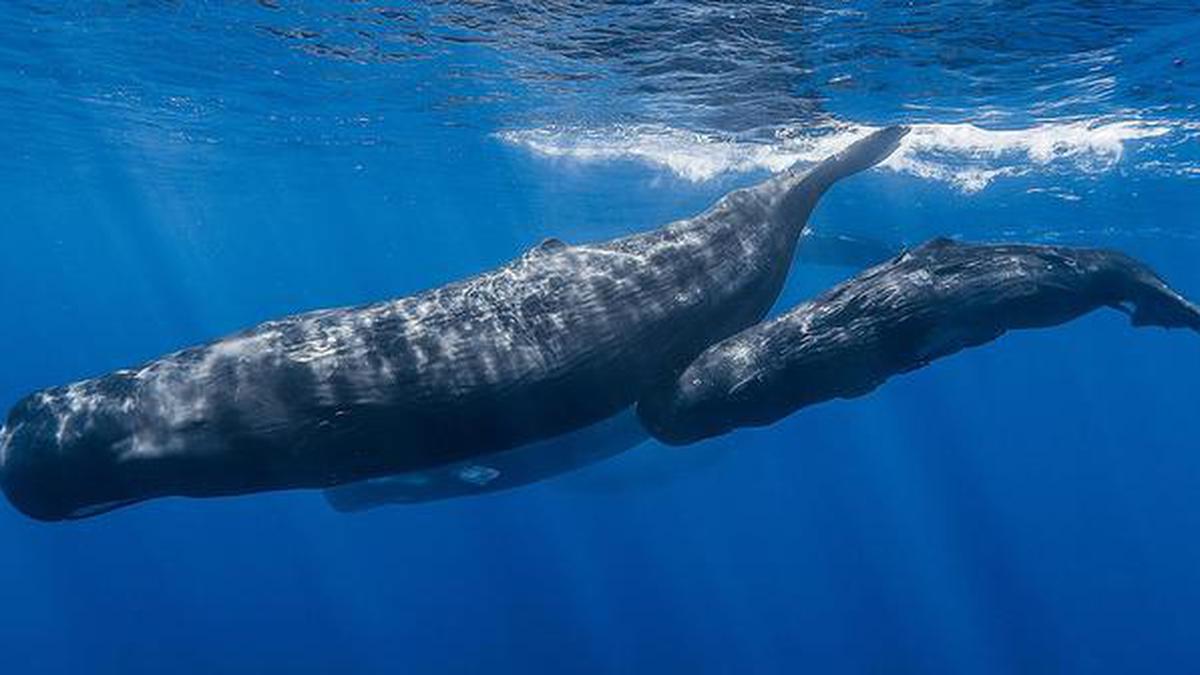A pod of sperm whales.
| Photo Credit: Wikimedia Commons
When archaeologists were digging a new library site at Valencina de la Concepción in southwest Spain in 2018, they uncovered an unusual item: half of a large sperm-whale tooth lying in a 4,000-year-old pit.
Because nothing like it had ever been reported from Copper-Age Iberia, the team ran a bevy of tests to learn where it could have come from and how it ended up in the pit.
Thus, based on evidence of marine boring and beach-root damage, the team unravelled the tooth’s long journey from a sperm whale’s mouth and to a settlement deep inland, offering en route a timeline of coastal processes four millennia ago.
Their findings were recently published in PLoS One.
The team shot overlapping photos with a camera and processed them to build a detailed 3D model that could be rotated on a screen, allowing tiny marks to be examined without handling the fragile specimen.
Then team members used a digital microscope to reveal surface scratches, drill holes, and biological bores smaller than a millimetre wide.
The team also unraveled four kinds of small tunnels and grooves: made by sponges, marine worms, grazing snails, and burrowing barnacles. They also mapped bite marks left behind by sharks.
The shape of the root — thick with a single point and light enamel — matched contemporary sperm whales. The original tooth was estimated to have been 20-25 cm long, meaning the whale was an adult.
Radiocarbon dating of the other animal bones and pottery in the pit revealed it was dug in about 2500-2400 BC.
In this way, the team reported that after the whale died, the tooth stayed on the seabed long enough for sponges, worms, snails and barnacles to bore into it and for sharks to scavenge the carcass. Later, water currents rolled it around and partially buried it in sand.
Someday, a storm or very high tide finally tossed the tooth onto a nearby shore. While buried in beach sand, plant roots etched new channels and a limestone crust formed on its surface.
Humans of the Copper Age then picked it up, probably because it looked exotic and valuable, and pressed several chisels or awls into the break edge to split pieces off pieces, probably to use in ornaments.
Eventually, the people placed the trimmed tooth in a pit about a metre wide and deep along with broken dishes, stone tools, and animal bones. The archaeologists didn’t find any human bones inside and thus concluded the pit to be a “structured deposition”, meant to remove precious items from everyday use.
This is the only sperm-whale tooth found in Copper-Age Spain and only the second in the Western Mediterranean of similar date. Its discovery thus widened the list of rare and prized materials — including elephant ivory, ostrich eggshells, and rock crystals — circulating at Valencina at this time.
The burial also showed that coastal objects, even from gigantic sea creatures never seen alive inland, held symbolic power for communities engaged predominantly in farming.
Published – June 16, 2025 04:00 pm IST
